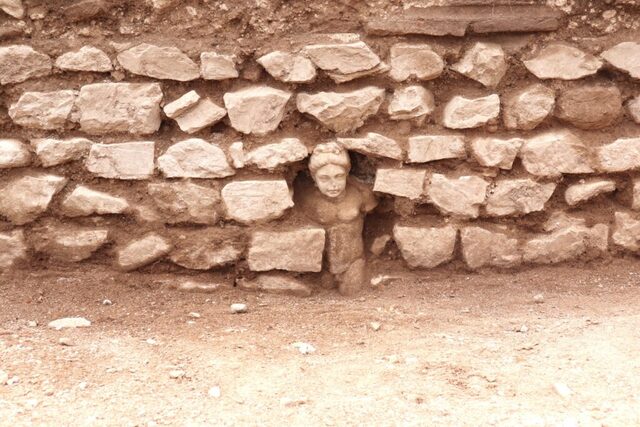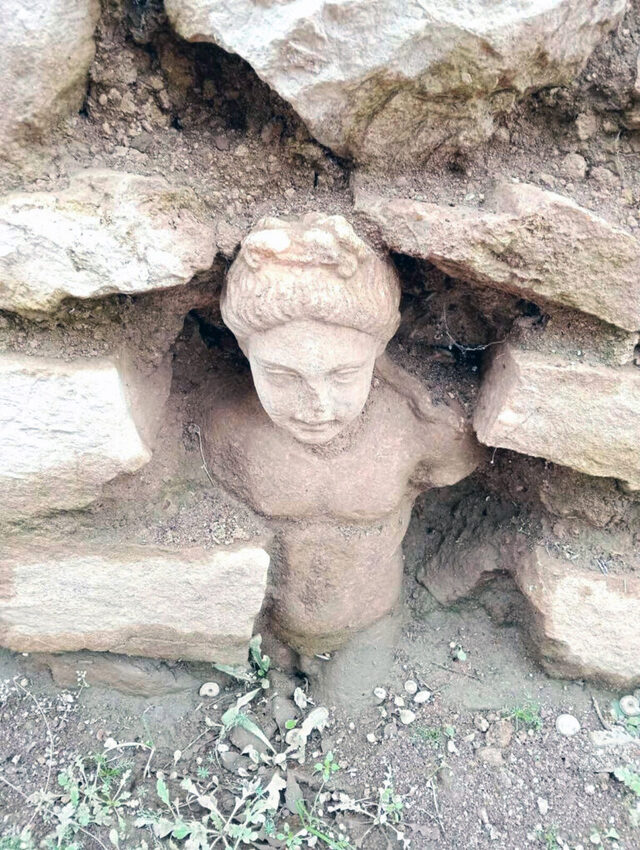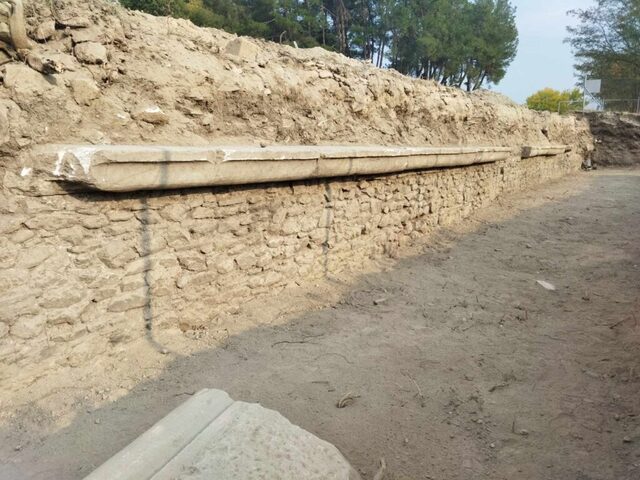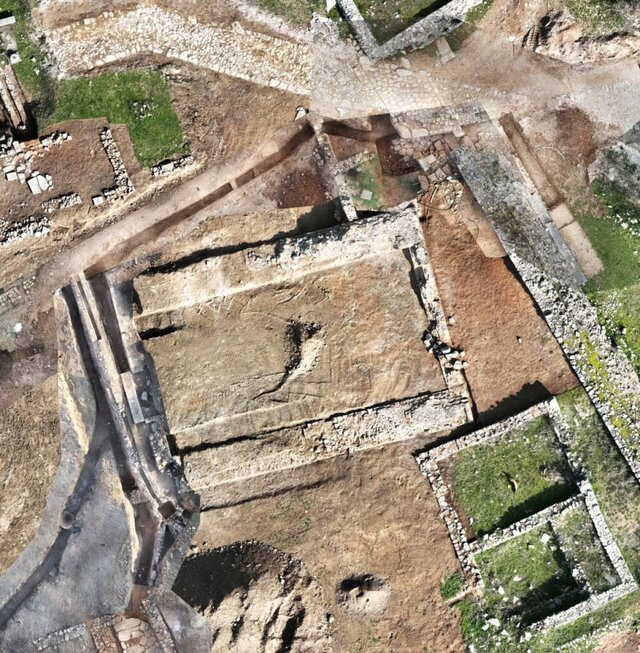The ancient city of Philippi, founded in 356 BCE by King Philip II of Macedonia, stands as a remarkable testament to history. Over centuries, its grandeur has been buried beneath layers of time, but recent archaeological discoveries during modern infrastructure projects have shed new light on its past. These findings not only reveal unknown aspects of Philippi’s rich history but also challenge long-standing assumptions about the city’s evolution and legacy.
Discovery of a Youthful Statue
Among the most captivating discoveries is an embedded statue of a youthful male figure, unearthed during the installation of a fire safety network in the archaeological site. The statue, integrated into the northern wall of a large public building near the ancient theater, reflects the Roman tradition of adorning structures with sculptures. While only the upper torso of the statue has been revealed, archaeologists believe its full excavation could provide deeper insights into the building’s purpose. Was it a reservoir, a granary, or perhaps part of a Roman-era thermal bath? The statue’s placement suggests a deliberate effort to emphasize the building’s significance in Philippi’s urban landscape.


Video
Explore the ancient city of Philippi and its rich history – watch the video to uncover the location and significance of this important archaeological site!
Insights from Public Bath Complexes
Another fascinating discovery is a Roman-era public bath complex located southwest of the palestra. This structure features semi-circular rooms with intricately designed marble floors, indicative of Roman luxury and sophistication. Interestingly, the baths also exhibit early-Christian modifications, suggesting their continued use well into the Byzantine period. These adaptations, such as the integration of older Roman roads, reveal how Philippi’s urban planning evolved over time. Such structures highlight the city’s importance as a cultural and social hub during its peak.
Expanding Knowledge of Philippi’s Urban Layout
The recent excavations have uncovered vital details about Philippi’s urban layout. Archaeologists identified remnants of roads, workshops, and residential areas, painting a vivid picture of daily life in the ancient city. A particularly notable finding is a monumental wall along the northern edge of the Via Egnatia, the city’s main thoroughfare. This wall, adorned with niches that likely held statues, speaks to the grandeur of Philippi’s public spaces. Earlier excavations by the French Archaeological School in the 1930s hinted at similar structures, but the new discoveries provide a more comprehensive understanding of the city’s architectural landscape.

Evidence of Continued Occupation
Contrary to previous beliefs that Philippi was abandoned after the 6th century CE, recent findings indicate the city remained inhabited well into the 11th century CE. Structures dating from the 9th to 11th centuries CE reveal a continued occupation, challenging earlier assumptions about Philippi’s decline. These discoveries underscore the city’s resilience and strategic importance, even during periods of broader geopolitical instability in the region.
Challenges in Preservation and Modern Development
The fire safety project, while essential for protecting Philippi’s cultural heritage, posed significant challenges for archaeologists. Every step of the installation required careful planning to avoid damaging historical structures. For instance, pipelines were rerouted or elevated above ancient walls to preserve their integrity. In only two instances, partial deconstruction of walls was necessary, showcasing the meticulous care taken to balance preservation with modernization. Such efforts reflect the importance of integrating archaeological sensitivity into contemporary development projects.
Integration of Infrastructure and Archaeology

Beyond fire safety, the project also introduced water and electricity provisions to the archaeological site, enhancing its accessibility for visitors. Modern engineering solutions ensured these installations did not compromise the site’s aesthetic or historical value. By placing fire hydrants discreetly and using advanced technology to avoid physical damage, the project highlights how infrastructure can coexist harmoniously with cultural heritage preservation.
Boost in Tourism and Global Recognition
Since being listed as a UNESCO World Heritage Site in 2016, Philippi has experienced a surge in tourism. Visitor numbers soared to 100,000 annually by 2024, a significant increase from pre-pandemic levels of 40,000. This growth is attributed to ongoing projects aimed at unifying the archaeological site, which have significantly enhanced its appeal. Philippi’s inclusion in the UNESCO list underscores its global importance as a cultural and historical landmark, drawing visitors from around the world to witness its grandeur.
Future Research Opportunities
The discoveries made during the fire safety project have opened new avenues for archaeological exploration. Large public buildings near the theater, Roman baths, and the monumental wall along the Via Egnatia are all prime candidates for further study. These sites hold the potential to reveal even more about Philippi’s history, from its Roman foundations to its Byzantine transformations. Collaboration between local authorities and international archaeological teams will be crucial in unlocking these secrets.
Video
Discover the history of the Battle of Philippi (42 B.C.E.) – watch the video to explore this pivotal event in Roman history and its lasting impact on the Roman Empire!
Conclusion
The ancient city of Philippi continues to captivate archaeologists and visitors alike with its layers of history and cultural significance. Recent discoveries not only enrich our understanding of this once-thriving metropolis but also demonstrate the importance of preserving such treasures for future generations. As modern technology and careful planning reveal more of Philippi’s secrets, the city stands as a bridge between the ancient and modern worlds—a timeless testament to humanity’s enduring legacy.
